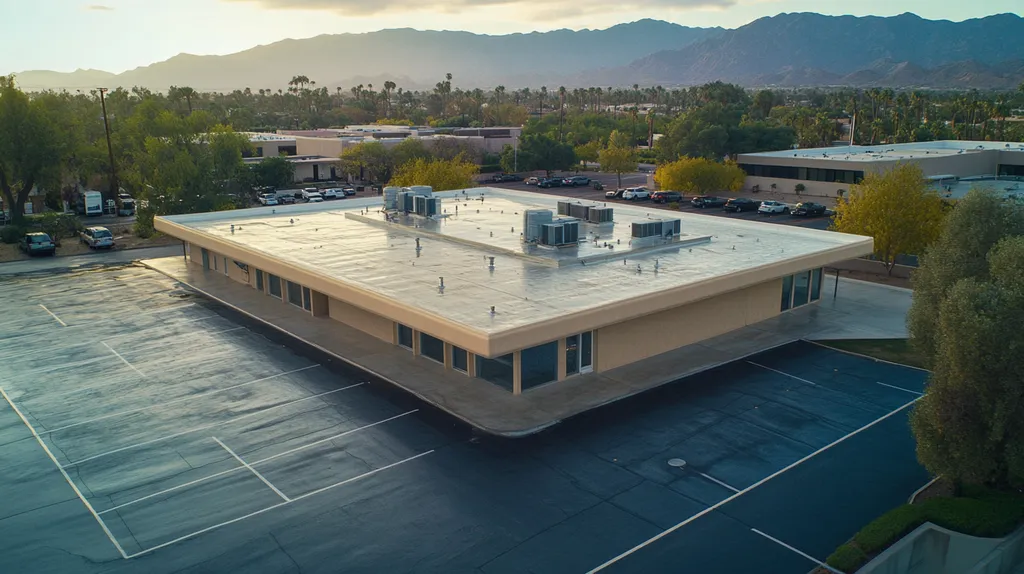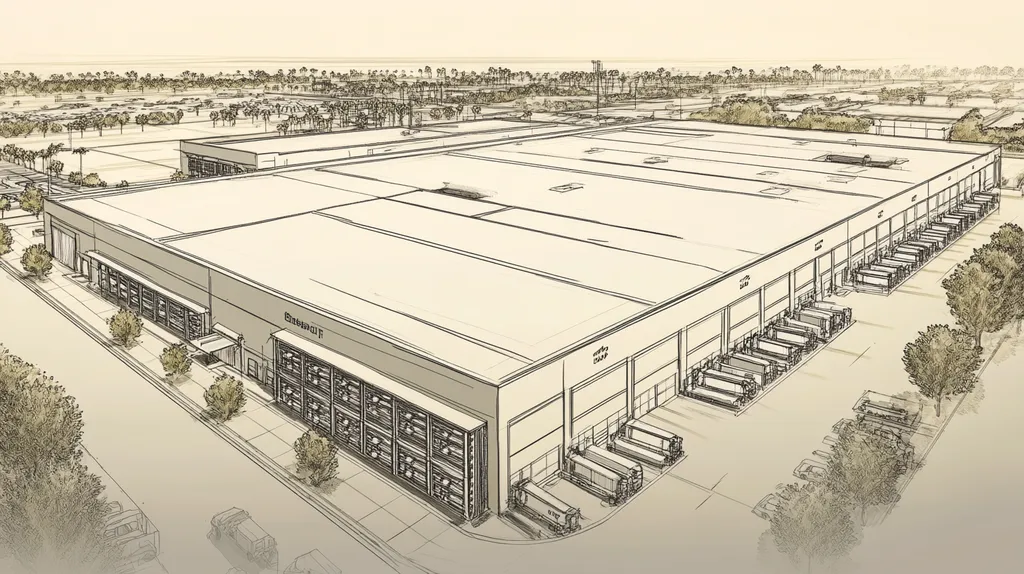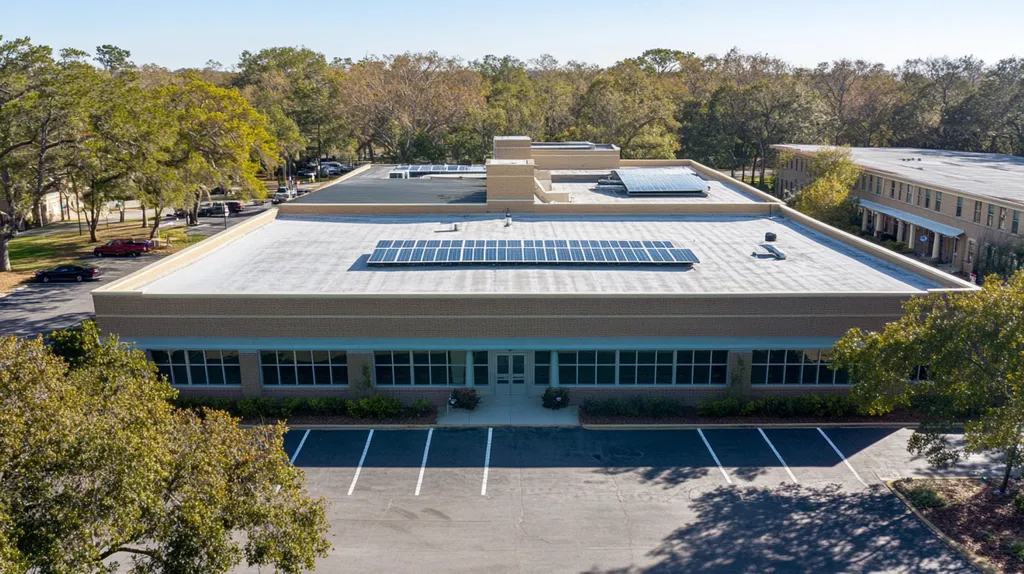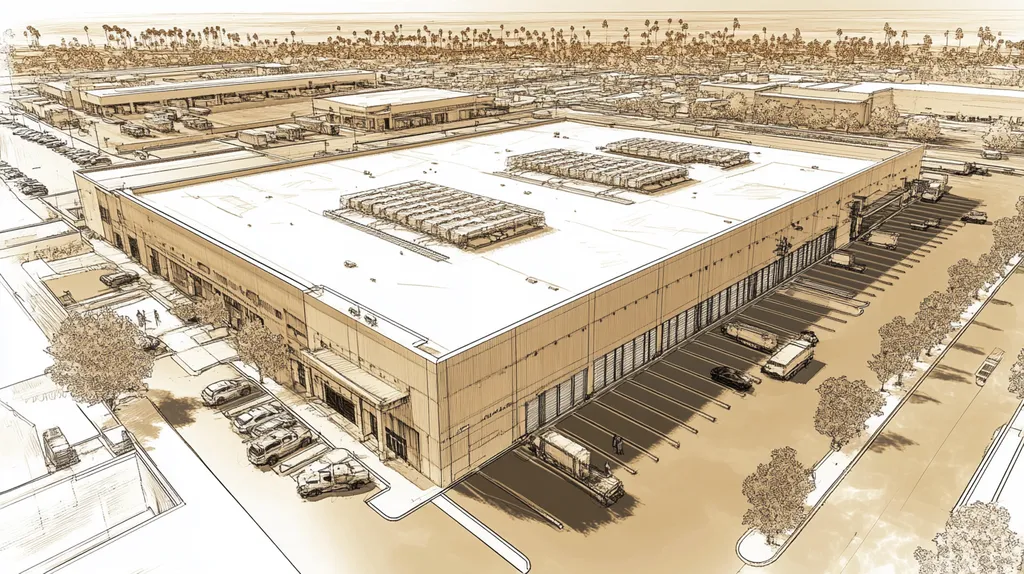In heavy equipment facilities, roof failure isn’t just an inconvenience—it can lead to millions in damaged machinery and dangerous working conditions. Industry data shows that 40% of industrial roof systems fail prematurely due to inadequate specifications for heavy equipment environments.
From supporting massive machinery loads to protecting against chemical exposure, these specialized roofs face unique challenges that standard commercial roofing solutions cannot address.
This comprehensive guide examines the critical components, implementation methods, and maintenance requirements for creating robust roofing systems that safeguard valuable equipment while maximizing facility operations.
SECTION 1: FUNDAMENTAL CONCEPTS
When it comes to heavy equipment facilities, the roofing system isn’t just a finishing touch—it’s a critical component that can make or break operations. These roofs face a multitude of challenges, from bearing the heavy loads of machinery to resisting the elements. An inadequate roofing solution can lead to expensive structural failures and safety hazards. In this section, we’ll explore the unique challenges that industrial roofs encounter, the necessity of adhering to building codes and regulations, and the key environmental and operational considerations for ensuring a successful roofing project.
Unique Challenges of Industrial Roofs
Industrial roofs are designed for a different level of stress than typical commercial roofs. One of the main challenges is supporting the immense weight of heavy machinery, ensuring that the roof remains structurally sound and safe.
In addition, facilities frequently require features like proper ventilation and maintenance access. If these needs are not factored into the roofing design, it could lead to unnecessary operational hurdles.
Moreover, many heavy equipment facilities deal with chemicals and corrosive materials that can significantly wear down roofing materials. Choosing the right materials that can withstand such exposures is crucial to extending the life of the roof and reducing repair costs.
Weather also plays a big role in roof performance. In areas prone to severe conditions, such as high winds or extreme temperatures, roofs need to be custom-designed to stand the test of time and nature.
Building Codes and Regulations
Knowledge of local building codes and regulations is essential when managing roofing projects for heavy equipment facilities. These laws are established to maintain safety standards and protect public welfare, and failing to comply can result in hefty fines and costly modifications.
Building codes often specify requirements for load-bearing capacities and material standards. For instance, rooftops in seismic zones have more stringent specifications to endure potential earthquakes.
Regulations may also address fire safety by mandating the use of flame-resistant materials and proper drainage systems. Ignoring these requirements can not only create legal issues but also put employees at risk.
Lastly, inspections throughout the installation process are typically required to confirm that all work adheres to established guidelines, adding another layer of scrutiny to the roofing project.
Environmental and Operational Factors
When selecting a commercial roof for heavy equipment facilities, environmental aspects are paramount. The geographic location influences weather patterns that can drastically affect the roof’s lifespan. For example, regions that experience heavy snowfall need roofs that can endure additional weight without compromising safety.
Operational requirements, such as regular maintenance access, should also dictate roofing design. Roofs need to allow personnel to perform maintenance safely and conveniently, without risking either their safety or the integrity of the structure.
Energy efficiency is becoming an increasing priority for many industrial facilities. Roofing materials that reflect heat can lead to significant reductions in energy costs, helping contribute to overall sustainability.
Lastly, environmental concerns, such as nearby industrial pollutants, should shape the selection of roofing materials. Protective coatings may be necessary to guard against chemical exposure and deterioration over time.
SECTION 2: SYSTEM COMPONENTS
The structural integrity of commercial roofs for heavy equipment facilities is crucial, as the wrong selection of components can lead to disastrous consequences. A roof membrane that fails or insufficient insulation can result in significant energy losses and costly water damage. When heavy machinery is housed below, the stakes couldn’t be higher. Understanding the essential components of roofing systems is vital for property owners and facility managers. In this section, we will examine various roof membrane options, fastening systems, and the integration of crucial equipment and accessories.
Roof Membrane and Insulation Options
Selecting the appropriate roof membrane is vital for safeguarding against harsh weather conditions. Common choices like TPO, EPDM, and PVC each excel in durability and energy efficiency, making them ideal for protecting the valuable equipment housed beneath. A robust membrane can endure physical stress and varying temperatures, ensuring long-lasting protection.
Insulation is equally important for maximizing energy efficiency and regulating temperature. Options such as rigid foam boards and spray foam are effective at minimizing heat loss, ultimately lowering energy costs. Good insulation is especially crucial in heavy equipment facilities, as it helps prevent condensation, which can negatively impact equipment longevity.
Local climate conditions and specific operational needs should guide the selection of both membrane and insulation. Investing in high-quality materials upfront not only enhances performance but can lead to considerable cost savings down the line.
Additionally, following expert installation methods is key to ensure that these foundational layers provide the expected level of service throughout the roof’s lifespan. The longevity and reliability of the roof structure depend heavily on these initial choices.
Attachment Methods and Fastening Systems
Reliable attachment methods are essential for maintaining the integrity of roofs over heavy equipment facilities. Mechanically fastened systems provide the strength and flexibility needed to accommodate the natural expansion and contraction of materials without compromising structural integrity. On the other hand, adhered systems may appear seamless but can be less resilient in extreme conditions.
The fastening systems chosen must specifically cater to the weight and movement of heavy machinery. Utilizing strong anchors and plates is crucial to ensure the membrane remains securely in place, even under stress. Routine inspections of these fastening points can help identify potential weaknesses before they lead to failure.
Moreover, the risk of wind uplift should not be overlooked, especially in spacious areas where heavy equipment is frequently operated. Efficient fastening solutions can help mitigate this risk, ensuring continuous operations without unexpected interruptions.
To maximize roof performance and lifespan, facilities should place a strong emphasis on training installation teams in effective fastening techniques. A well-executed installation can lead to significant long-term savings and peace of mind.
Equipment and Accessory Integration
Integrating roofing accessories is essential for the smooth operation of heavy equipment facilities. Elements like roof hatches, ventilation systems, and drainage solutions must be incorporating seamlessly to enhance the functionality of the roof. Properly installed accessories can help improve airflow and reduce moisture accumulation, benefiting the internal environment.
Careful selection of each accessory, considering both its functionality and compatibility with the roofing system, is crucial. Misaligned or poorly integrated accessories can lead to leaks and potentially damage valuable equipment below.
Ease of maintenance access is another key factor. Roof designs that facilitate quick and safe access allow personnel to perform routine inspections and repairs without compromising safety or the integrity of the structure.
Ultimately, collaborating with roofing professionals during the planning phase can yield more efficient designs and avoid future challenges. This proactive step helps ensure long-term success and durability of the roofing system.
SECTION 3: IMPLEMENTATION METHODS
When it comes to roofing for heavy equipment facilities, ensuring structural integrity is non-negotiable. A roof that isn’t equipped to handle heavy loads risks catastrophic failure, which can lead to costly repairs and dangerous situations. Statistics reveal that nearly 20% of commercial roofing failures are attributed to improper installation. In this section, we will delve into essential factors such as weight capacity analysis, best practices for installation, and the importance of compliance with local building codes.
Weight Capacity and Structural Analysis
Knowing the weight capacity of a roof is essential for any heavy equipment facility. Structural analysis involves evaluating the existing framework to confirm it can handle the substantial weight of heavy machinery. Engineers assess several factors, including material strength, design load, and environmental influences such as snow or wind loads.
Neglecting a comprehensive analysis can lead to disastrous outcomes. Roofs that lack structural soundness risk collapsing under unexpected stress, jeopardizing valuable equipment and the safety of personnel. It’s vital that roofs are designed with an appropriate safety margin to account for these risks.
Engaging a qualified structural engineer during the planning phase can significantly reduce risks. They can suggest reinforcement options or alternative materials that can withstand necessary loads without sacrificing safety. Regular inspections of the roofing system are also advisable to monitor stress levels and identify potential issues early.
In the end, a thorough weight capacity evaluation lays the groundwork for effective roofing solutions, ensuring that both operations and equipment remain secure.
Installation Considerations and Best Practices
Installing roofs for heavy equipment facilities requires meticulous attention to detail and specialized skills. Choosing the right roofing material is crucial, as heavy machinery demands robust options. Reinforced TPO or PVC membranes are often favored for their durability and load-bearing capabilities.
Preparation plays a pivotal role in the installation process. Inspecting and repairing the roof deck ensures it is smooth and devoid of defects, avoiding issues like water pooling that could compromise the structure.
Adhering to the manufacturer’s guidelines during installation is essential. Employing certified contractors with industrial experience can ensure that best practices are consistently applied, minimizing the risk of premature roof failure.
After installation, prioritizing regular maintenance checks is crucial. Addressing small issues early on can avoid costly repairs later and keep the roof functional and safe for all operations.
Compliance with Local Building Codes
Adhering to local building codes is a fundamental component of effective roofing implementation. These regulations are designed to uphold safety and performance standards, tailored to the environmental conditions of the region. Failing to meet these standards can lead to hefty fines and operational disruptions.
Before starting any roofing project, it’s essential to investigate the specific codes that apply, such as load requirements, insulation values, and fire safety regulations. Compliance safeguards the property and mitigates potential liability for the owner.
Collaborating with local authorities during the planning stages can streamline the entire process. Obtaining necessary permits and ensuring inspections are conducted at various project milestones helps ensure compliance and can save time and resources.
Incorporating building codes into roofing strategies fosters a safer environment for both the facility and its occupants. This proactive approach enhances the integrity and operational efficiency of the building overall.
SECTION 4: MAINTENANCE REQUIREMENTS
Maintaining a commercial roof for heavy equipment facilities is not just advisable—it’s essential. In fact, roofs that undergo regular maintenance can last up to 50% longer than those neglected. This prolongation highlights the importance of proactive upkeep in maximizing a roof’s lifespan and ensuring the safety of both heavy equipment and personnel. In this section, we’ll discuss the significance of regular inspections, establish safety protocols for rooftop equipment, and outline effective preventive maintenance strategies.
Regular Inspection and Repair Needs
Regular inspections are a cornerstone of roof maintenance, enabling the early identification of wear and potential problems. Facilities should aim to schedule inspections at least twice a year, ideally coinciding with seasonal weather changes. Roofing professionals during these inspections will look for signs of damage, such as cracks, leaks, and deterioration of the membrane.
Heavy machinery operations can place additional strain on roofs, making immediate attention to any issues crucial. Property owners must be proactive, addressing minor concerns before they escalate into larger, more costly repairs. Keeping a meticulous log of inspections and repairs can help track the roof’s condition over time.
Location matters too; roofs in regions prone to heavy storms or snowfall may experience rapid wear. Implementing a quick response system for assessing leaks or damage can significantly lower repair costs while strengthening the roof’s resilience. A regular inspection schedule is not merely a good practice; it’s a strategic necessity for facility managers.
Access and Safety Protocols for Rooftop Equipment
Accessing rooftops inherently presents safety risks, particularly with heavy equipment involved. Establishing strict protocols is vital to ensuring the safety of inspections and maintenance activities. Facilities should be equipped with suitable access points, like ladders or external staircases, built to comply with safety standards.
Mandatory safety gear, including harnesses and hard hats, is essential for all maintenance personnel. Regular training sessions on safety protocols are crucial; conducting safety drills ensures that staff are well-versed in emergency procedures linked to rooftop access.
Additionally, clear signage marking safe pathways and hazard zones acts as a vital deterrent against accidents. By prioritizing access and safety measures, facilities can significantly minimize the risk of injuries and liability claims, effectively protecting both employees and the roof itself.
Preventive Maintenance Strategies
Implementing preventive maintenance is the best defense against emergency repairs and costly roof failures. Property owners should craft a comprehensive maintenance plan that includes cleaning gutters, removing debris, and addressing minor repairs before they grow into significant issues. Regular gutter cleaning, for instance, can prevent water damage by ensuring proper drainage.
Applying protective coatings or sealants is another important strategy, enhancing the roof’s resilience against harsh weather. Facilities housing heavy equipment should invest in durable materials that withstand impact and significant loads.
Moreover, temperature fluctuations can cause roofing materials to expand and contract, leading to cracks. Regular inspections for thermal expansion issues should be integral to any maintenance routine, and utilizing thermographic inspections can help identify hidden problem areas.
By adopting effective preventive strategies, facility managers can not only extend the lifespan of the roof but also reduce risks associated with heavy machinery operations. A proactive approach to maintenance is essential for safeguarding both the facility and its valuable assets.
SECTION 5: PERFORMANCE METRICS
The performance of a commercial roof in heavy equipment facilities is crucial—after all, a failing roof doesn’t just mean repairs; it can spell costly downtime that disrupts operations and shrinks profit margins. Studies show that underperforming roofs can cut facility efficiency by as much as 30%. In this section, we will outline essential performance metrics, focusing on durability and lifespan, energy efficiency, and safety compliance to ensure a roofing system that stands strong.
Durability and Lifespan Evaluation
Durability is a critical aspect of any roofing system, particularly in heavy equipment facilities. The materials selected must endure harsh weather, physical impacts, and exposure to chemicals. For example, a high-quality thermoplastic polyolefin (TPO) roof can last up to 20 years with minimal upkeep, while less robust materials might need replacing in only ten years under similar conditions.
Regular inspections are key to spotting issues before they escalate into major problems. Facilities should implement a maintenance plan that not only extends roof durability but also saves on future costs, thus ensuring ongoing protection for valuable equipment.
Investing in robust roofing solutions minimizes operational disruptions and safeguards significant capital investments tied up in heavy machinery.
Energy Efficiency and Cost Analysis
Energy efficiency is vital for managing operating costs in heavy equipment facilities. A well-engineered roof can lead to significant reductions in heating and cooling expenses. For instance, incorporating reflective roofing materials can lower energy consumption by up to 15%, delivering considerable savings over time.
Integrating insulation also boosts efficiency, enhancing thermal performance and reducing HVAC demands. This added insulation can yield a 10-15% return on investment each year through lower utility bills.
Building owners should factor in the total cost of ownership, considering both initial installation expenses and long-term savings from energy efficiency and maintenance. A well-planned roofing solution is not just an expense; it’s an investment that can positively affect a facility’s bottom line.
Safety and Compliance Standards
Safety and compliance are crucial in roofing projects for heavy equipment facilities. Moritz regulations surrounding worker safety and environmental standards must be strictly followed, as non-compliance could lead to legal repercussions and financial penalties.
To ensure compliance, it is essential to choose materials and designs that meet local building codes, covering load requirements and fall protection features for maintenance workers. Regular inspections and thorough documentation of maintenance actions are necessary for proving adherence to these standards.
By weaving safety and compliance considerations into roofing decisions, facilities not only safeguard their investments but also enhance their reputation for operational reliability.
SECTION 5: PERFORMANCE METRICS
The performance of a commercial roof in heavy equipment facilities is more than just a detail—it’s a cornerstone of operational success. A failing roof can lead to significant downtime and repair expenses, drastically impacting productivity. Research indicates that underperforming roofs can reduce facility efficiency by as much as 30%. This section will dive into the key performance metrics of roofing systems, focusing on durability and lifespan, energy efficiency, and safety compliance—each vital to maintaining a strong, effective roof.
Durability and Lifespan Evaluation
Durability is a critical factor for any roofing system, particularly in facilities housing heavy equipment. The materials selected must be tough enough to withstand harsh weather, heavy impacts, and exposure to potentially damaging chemicals. A roof’s lifespan is directly tied to both the quality of materials used and the standard of installation.
For instance, a top-tier thermoplastic polyolefin (TPO) roof can endure up to 20 years with minimal maintenance, while inferior materials might fail within a decade under similar stresses. Understanding the longevity of these systems is essential for effective budgeting for future repairs or replacements.
To safeguard investments, regular inspections are key. These checks can identify small issues before they transform into major failures. Facility managers should develop a maintenance strategy aimed at prolonging roof durability, which ultimately translates into savings over time.
By investing in high-quality roofs, facilities reduce the likelihood of operational disruptions and protect significant investments tied to heavy machinery.
Energy Efficiency and Cost Analysis
Energy efficiency is crucial for controlling operating costs in heavy equipment facilities. An intelligently designed roof can result in considerable reductions in heating and cooling expenses. For example, using reflective roofing materials can lower energy consumption by up to 15%, leading to an impactful benefit on operating budgets.
Adding insulation to the roofing system further enhances efficiency, improving thermal performance and easing HVAC load demands. Quality insulation can deliver a return on investment (ROI) of 10-15% annually through lower utility expenses.
Moreover, when considering roofing solutions, it’s vital to assess the total cost of ownership. This includes not just initial installation costs but also long-term savings derived from energy efficiency and reduced maintenance. A well-structured roofing investment doesn’t merely add to expenses; it offers ongoing financial benefits throughout its lifespan.
Ultimately, a roof designed for energy efficiency can significantly boost a facility’s bottom line, making it a strategic asset in operations.
Safety and Compliance Standards
Safety and compliance should never be overlooked in commercial roofing projects. Facilities dealing with heavy equipment must comply with strict regulations related to worker safety and environmental impacts. Ignoring these regulations can lead to serious legal issues, liability problems, and financial penalties.
To ensure compliance, it is essential to choose roofing materials and designs that meet local building codes, addressing load requirements and providing adequate fall protection for maintenance personnel.
Regular inspections and thorough documentation of maintenance efforts are also necessary to demonstrate adherence to safety standards. This proactive approach helps mitigate risks while ensuring the safety of employees and protecting valuable assets.
Integrating safety and compliance considerations into roofing decisions not only protects the facility’s investments but also bolsters its reputation for reliability and responsibility in operations.
The Bottom Line
With 40% of industrial roof failures occurring due to inadequate specifications for heavy equipment environments, the stakes couldn’t be higher for facility managers and property owners.
A properly designed and maintained commercial roof represents the difference between operational excellence and costly disasters in heavy equipment facilities.
From structural integrity and code compliance to energy efficiency and safety protocols, every aspect of these specialized roofing systems demands careful consideration and expert implementation.
The investment in quality materials, professional installation, and regular maintenance isn’t just about protecting the roof—it’s about safeguarding millions in equipment, ensuring worker safety, and maintaining operational continuity.
In today’s competitive industrial landscape, a robust roofing strategy isn’t optional—it’s essential for long-term success and profitability.
FREQUENTLY ASKED QUESTIONS
Q. What unique challenges do industrial roofs face?
A. Industrial roofs must support heavy machinery, resist harsh weather, and manage corrosive materials. If not designed properly, they can lead to structural failures and costly repairs.
Q. What are the best components for a commercial roof?
A. Essential components include a durable roof membrane, effective insulation, and reliable fastening systems. These elements ensure effective energy efficiency and structural integrity for heavy equipment facilities.
Q. How important is compliance with local building codes?
A. Compliance ensures that the roofing system meets safety standards, avoiding legal issues and protecting valuable assets. Collaborating with local authorities helps streamline the process and secures necessary permits.
Q. How often should I inspect my commercial roof?
A. It’s recommended to inspect commercial roofs at least twice a year, especially before and after severe weather. Early detection of problems can extend the lifespan of the roof and save on repair costs.
Q. What preventive maintenance strategies should I use?
A. Implement regular cleaning, debris removal, and maintenance of drainage systems. Also, consider applying protective coatings and conducting inspections for thermal expansion issues.
Q. How does energy efficiency impact commercial roofs?
A. A well-designed roof can lower heating and cooling costs significantly, affecting overall operational expenses. Energy-efficient materials can lead to considerable savings over time.
Q. What additional factors should I consider when choosing a commercial roof?
A. Consider local climate, the need for maintenance access, and environmental factors such as pollution. Choosing the right materials for these conditions can prevent premature deterioration and reduce costs.










